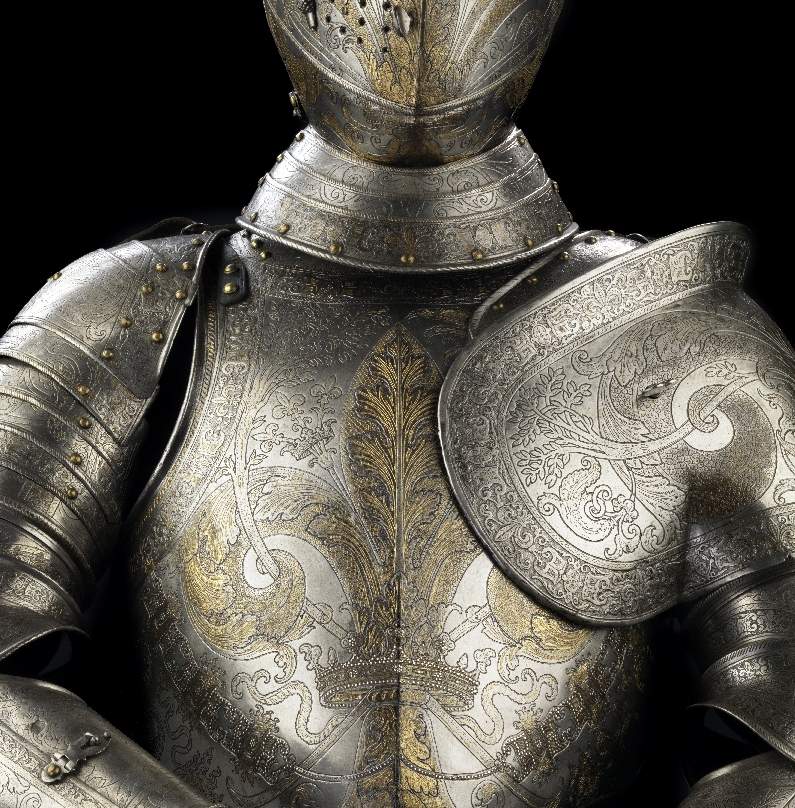The Capodimonte Museum and Royal Woods has reopened to the public two important sections on the second floor: the Farnese and Bourbon Armory after the intensive digitization campaign involving the Farnese and Bourbon arms collections, and the De Ciccio Collection section, which brings together 1,300 pieces including galanterie, glass, bronzes, ivories and medieval enamels, sacred vestments, textiles and embroideries, silverware for liturgical use, bronzes, ceroplasts, Sicilian shepherds, an important selection of archaeological objects and a group of majolica and porcelain.
The Capodimonte armory is one of the most significant in Europe. It collects the arms that belonged to the Farnese family between the late 15th and 17th centuries; the collection was bequeathed by Charles of Bourbon, who added to it in the 18th century his collection of firearms, some diplomatic gifts, and other arms produced by the Royal Factory of Naples. In the 19th century Ferdinand IV enriched the collection with some valuable 16th-century artifacts recovered during his exile in Palermo. The Capodimonte Armory thus traces the complete history of European arms of the modern era.
Before being one of the most important collecting families of the Renaissance, the Farnese family were soldiers and soldiers, such as Duke Pierluigi Farnese. Indeed, the masterpieces in their collection include weapons and armor. The Farnese armory today has about 600 pieces from the so-called “armeria secreta” of the Farnese palace in Parma. The core is composed of weapons made by the most important workshops in Europe: firearms, cutting and defense, white weapons, swords and daggers, all dating from the late 15th to the late 17th century. The most prized armors of the House of Farnese were commissioned from Pompeo della Cesa, one of the most skilled Italian armorers of the 16th century: he was able to create a homogeneous set of interchangeable pieces that could transform a foot armor into horse or jousting armor. His hand can be recognized by the extremely refined carving of the richly symbolic decoration, as in the armors known as “Volat” and “del Giglio,” masterpieces of the section.
In 1758 Charles III of Bourbon established the Fabbrica d’Armi at Torre Annunziata, on the southern outskirts of Naples. On the Torre factory depended the activity of other military factories, which introduced various technical improvements on objects of other European manufactures. From 1782 the Fabbrica degli Acciai was also founded for the production of objects of common use but also white weapons, located in the Palazzina dei Principi inside the Bosco di Capodimonte. The Bourbon factories had arisen for the needs of the army, but at the same time created refined hunting weapons for the court, enriched with ivory inlays and leather scabbards. The Neapolitan examples looked to Spanish models, although the decoration was lighter. The section also preserves Madrilenian firearms brought to Naples by Charles of Bourbon and those donated to Charles and Ferdinand of Saxon, Viennese, Spanish, and French manufacture. Finally, there is an important nucleus of oriental weapons and a series of model wars for use by the artillery school.
The De Ciccio Collection, donated by Mario De Ciccio to the Italian State in 1958, consists of 1,300 pieces, particularly objects of applied art from different periods and types, collected by the collector over a period of more than fifty years first in Palermo, his hometown, then in Naples, his adopted home since 1906, and also on the most highly rated art markets. With an eclectic taste of a still late 19th-century matrix, De Ciccio formed his collection with a few paintings, a few sculptures, 16th-century Limousin enamels, galanterie, glassware, small bronzes, ivories and medieval enamels, sacred vestments, textiles and embroideries, silverware for liturgical use, ceroplastics, an ’important selection of archaeological objects and a very select group of majolica and porcelain.
 |
| Armory and De Ciccio Collection of the Capodimonte Museum and Real Bosco reopened to the public |
Warning: the translation into English of the original Italian article was created using automatic tools. We undertake to review all articles, but we do not guarantee the total absence of inaccuracies in the translation due to the program. You can find the original by clicking on the ITA button. If you find any mistake,please contact us.